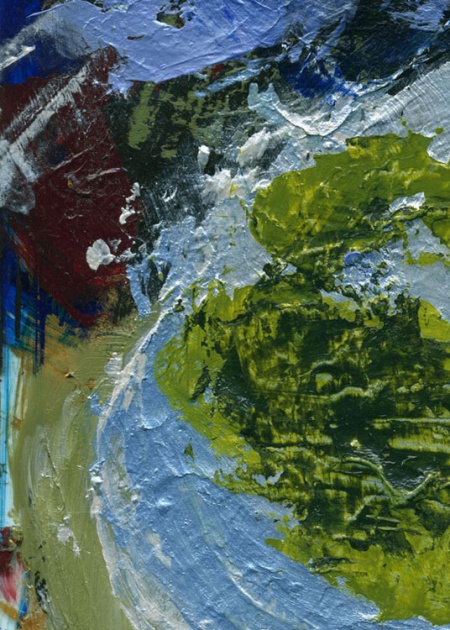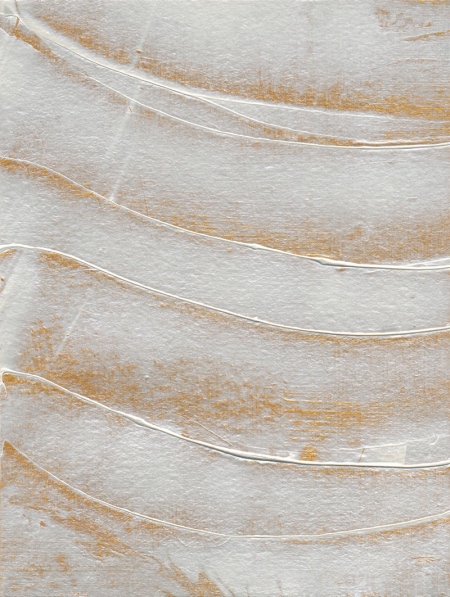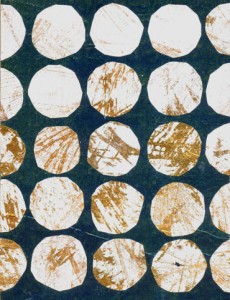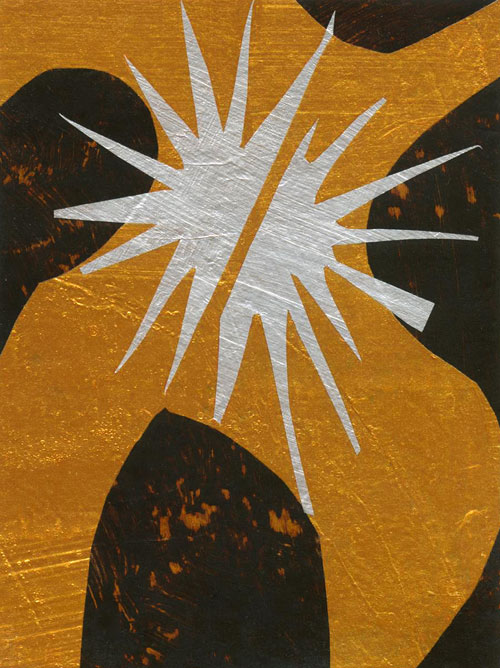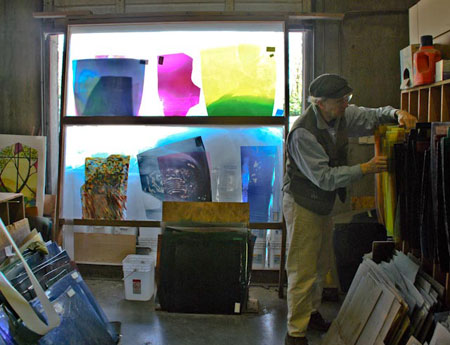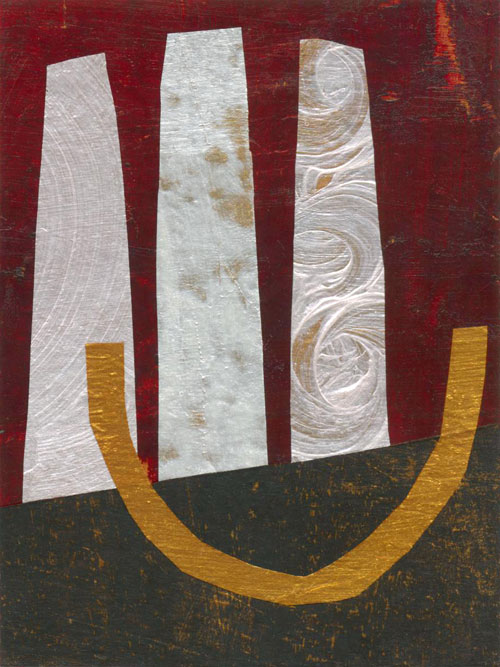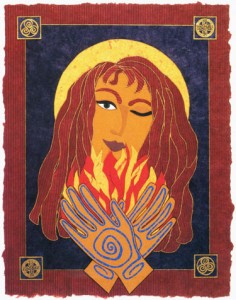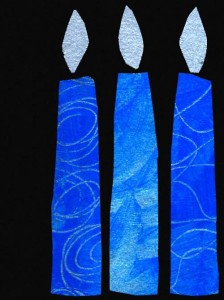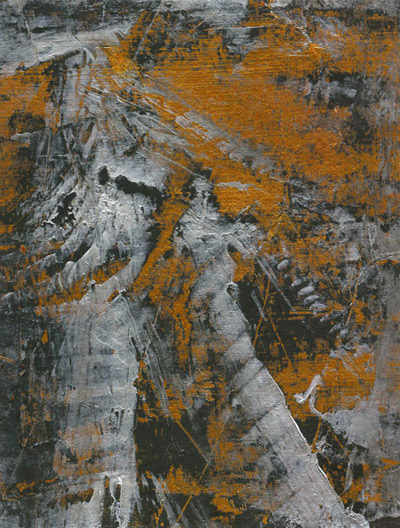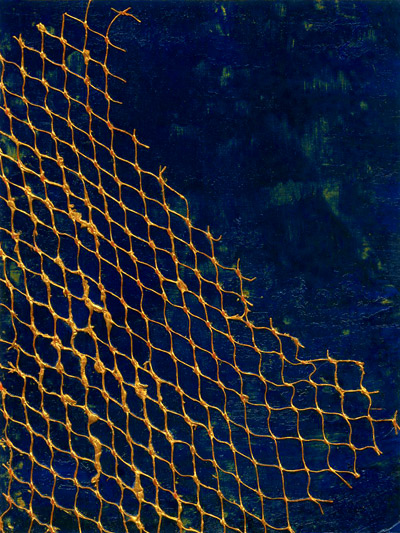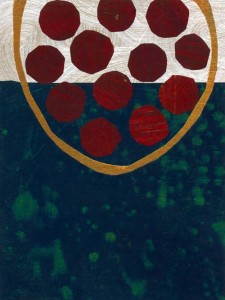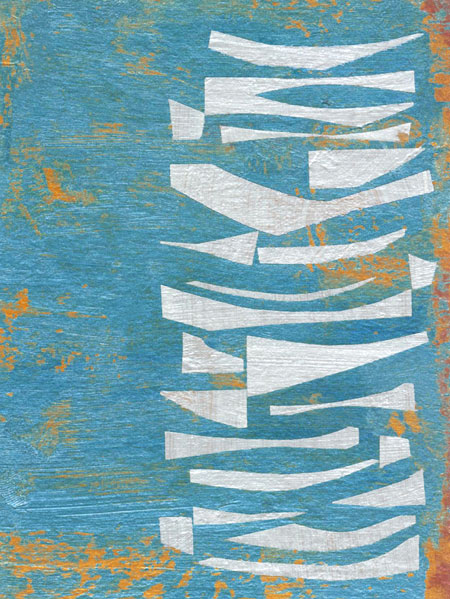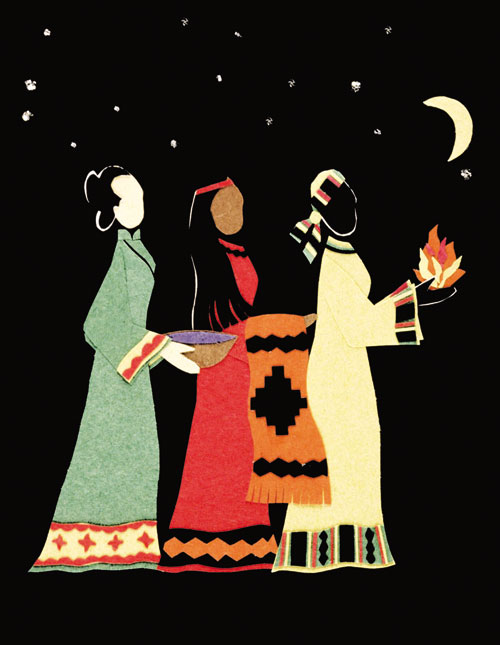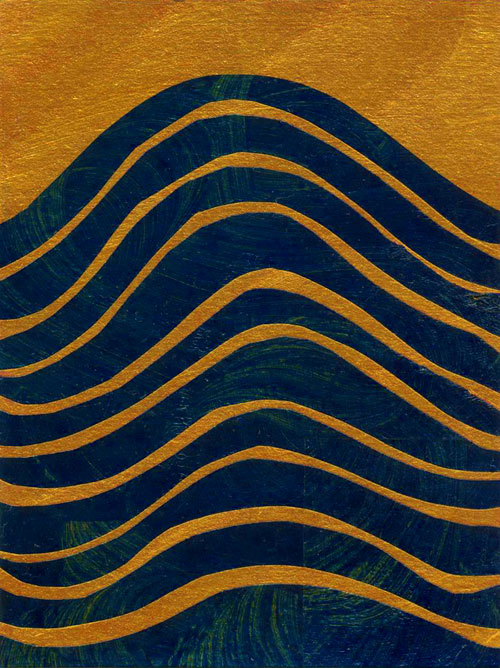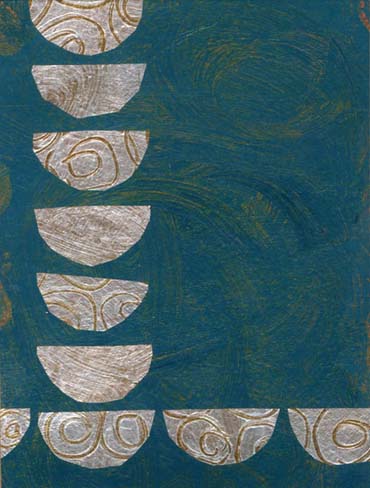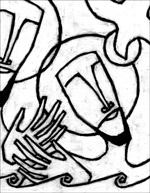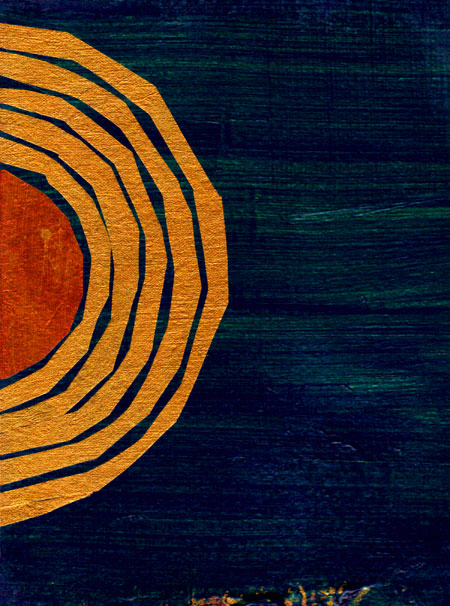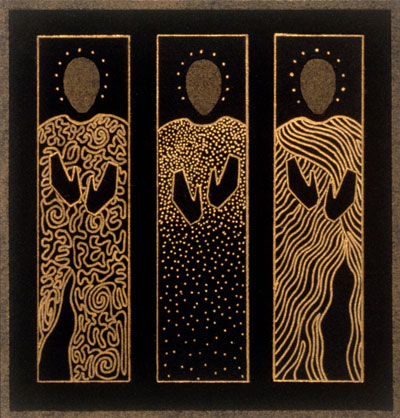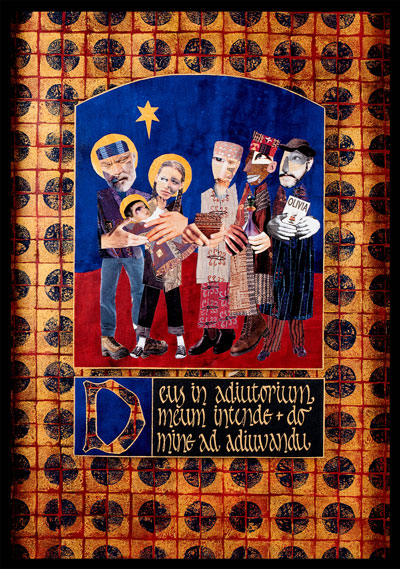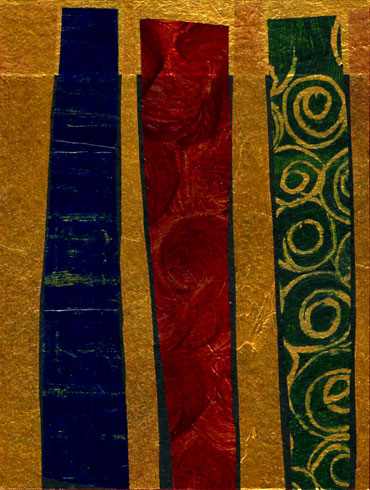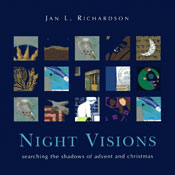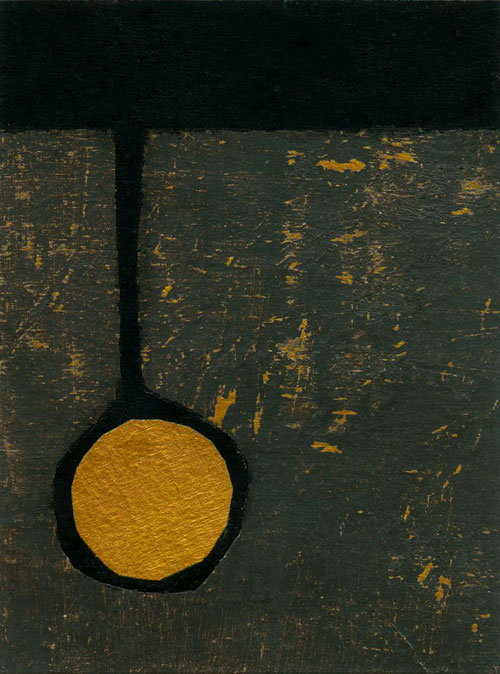Teach Me Your Paths © Jan L. Richardson
Make me to know your ways, O Lord; teach me your paths.
—Psalm 25.4
From a lectionary reading for Lent 1: Psalm 25.1-10
Advent and Christmas are not so very far behind us, and already the season of Lent draws close. The liturgical year can feel quite compressed right about now, but perhaps this is just as it should be. The season of Lent invites us, after all, to live into the Incarnation—to wrestle with what it means that God became flesh; to discern how God calls us to let the Word become flesh in us; to let go of what hinders us from recognizing Christ and finding and following the pathways he opens to us.
For me, these brief weeks between Christmas and the beginning of Lent this year have been a time of living into the paths that began to open up in my studio during the season of Advent. Those who have been journeying with me for some time know that last year was a relatively fallow one, art-wise. It was one of those seasons that happens periodically in the rhythm of the creative life—a time when not much seemed to be happening at the drafting table (and what was happening was vexing), but deep beneath the surface, preparation was taking place. Advent became a time for beginning to come to the surface, for experimenting and moving in some new directions, for finding and following the lines that presented themselves.
As I continued to follow those lines into this new year, new images came, arriving in forms I could not have predicted. And here at the outset of Lent, the studio teaches me anew the invitation that lies at the heart of the coming season: to pay attention, to keep practicing, to allow God to wear away what hinders us, to be open to the surprising turns and openings that draw us deeper into the path of God.
During this Lenten season, I’ll be sharing the images that have emerged in recent weeks. I’ll post an image daily throughout Lent. Brief reflections will accompany the images for the forty days of Lent, and I’ll also post images and my usual reflections for the Sundays of Lent (which aren’t counted in the forty days). I offer these not just to give you a glimpse of what’s been taking shape in my studio but as an invitation to you to engage your own path and to look for the openings that are waiting for you in the coming weeks. I’ll be posting each reflection about a week in advance of the day it’s intended for.
If you’d like to receive these reflections during Lent (and beyond), there’s a subscription signup form near the top of the sidebar; just submit your email address, then respond to the confirmation email that you’ll automatically receive, and each new reflection will be delivered to your inbox. Or, as usual, you can always find the reflections here at The Painted Prayerbook.
If you enjoy what you find here, there are several ways you can help sustain this ministry and enable it to continue. Doing any of these during this Lenten season would be a tremendous form of support:
- Share a link to a reflection via Facebook, Twitter, email, blogs, or through other media. You’ll find share buttons at the end of each post, or you can simply copy the link for the reflection and share it.
- Make use of the Jan Richardson Images website, or give a subscription as a gift to your pastor or church. Designed to make my artwork easily accessible for use in worship and related settings, the images site includes all the images I’ve created for my blogs. You can download individual images, or, with an annual subscription, you can have access to all the images for a year’s time. Please know I’m always happy to work with churches that may not be able to afford the full subscription price; just drop me a line through the images site. And thanks for including a credit line when you use an image; this is always a crucial way to support artists.
- Become a patron of The Painted Prayerbook. Although I’m an ordained minister in the United Methodist Church, my ministry involves raising my entire income myself. Purchasing books and art prints (available at janrichardson.com) and using the Jan Richardson Images site are great ways to be a patron of my work and sustain my ministry; you can also become a patron by making a contribution. For more info, visit the Patron page on my main website.
Thank you so much for sharing in my ministry. Your presence here is an especially welcome form of support, as are your prayers! Know that I hold you in prayer and I look forward to sharing the season of Lent with you. May God draw you down a wondrous path in the weeks ahead.
[To use the “Teach Me Your Paths” image, please visit this page at janrichardsonimages.com. Your use of janrichardsonimages.com helps make the ministry of The Painted Prayerbook possible. Thank you!]
